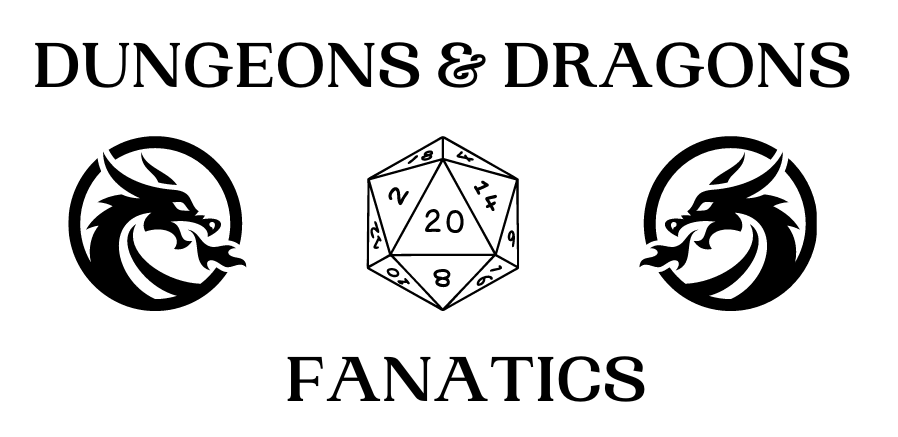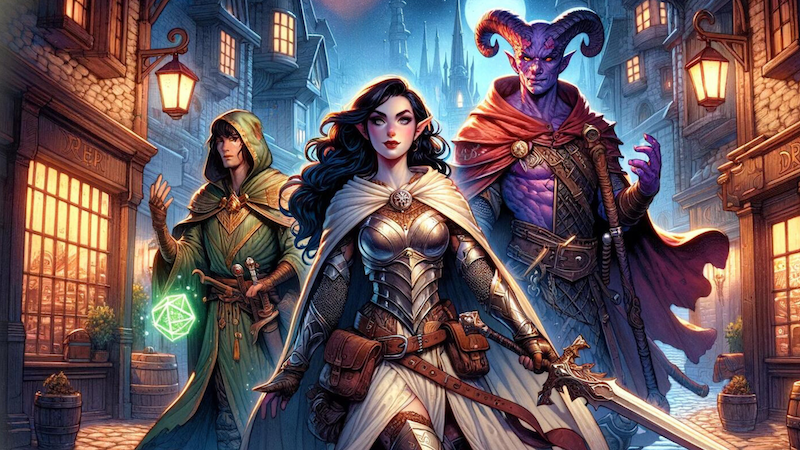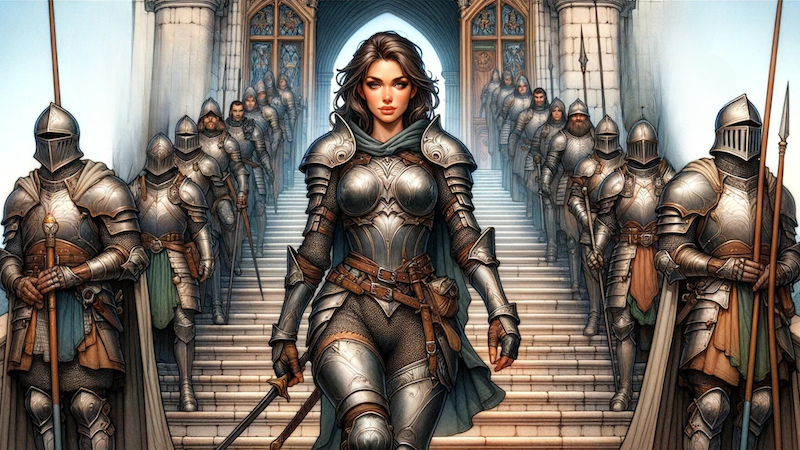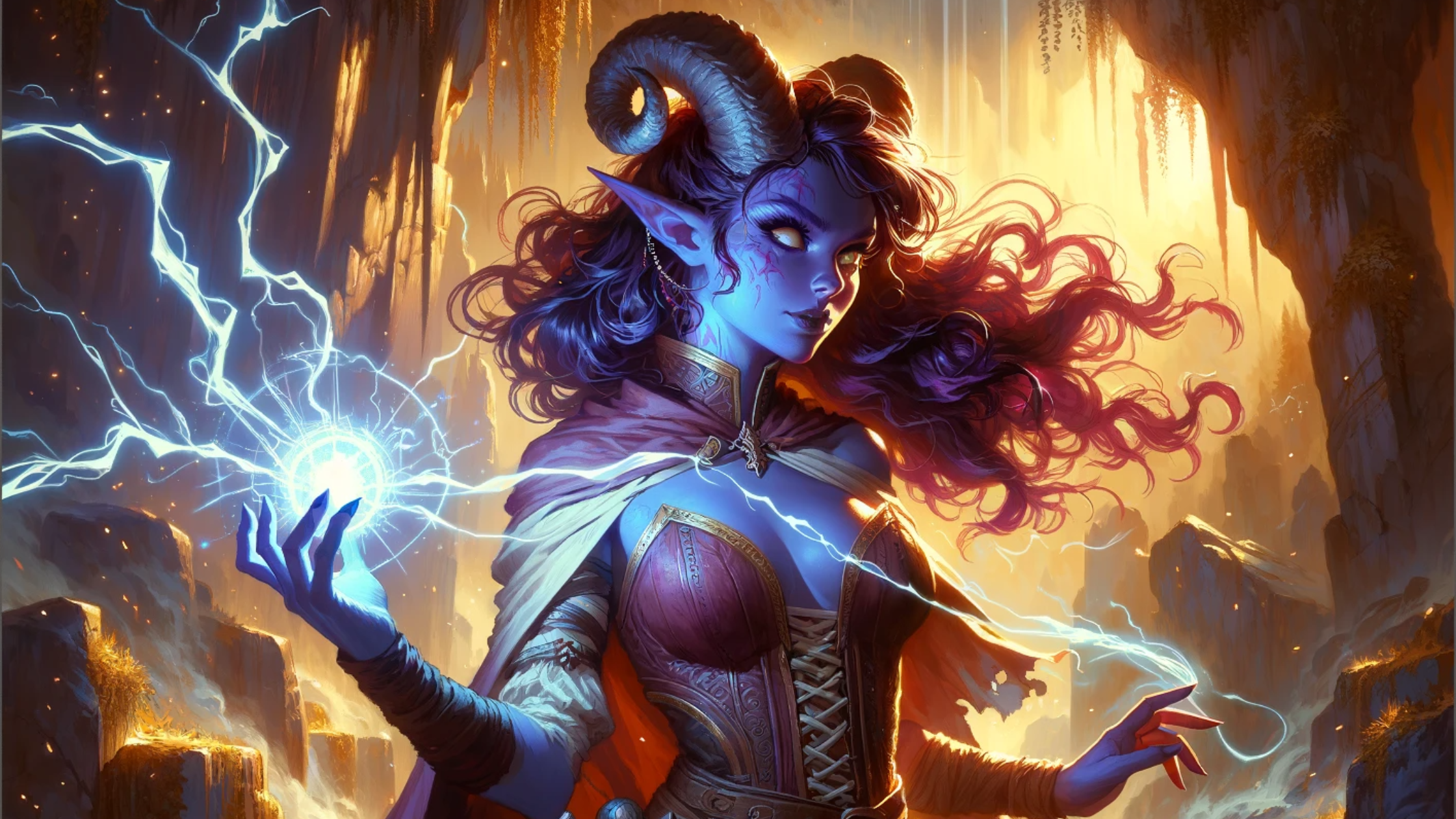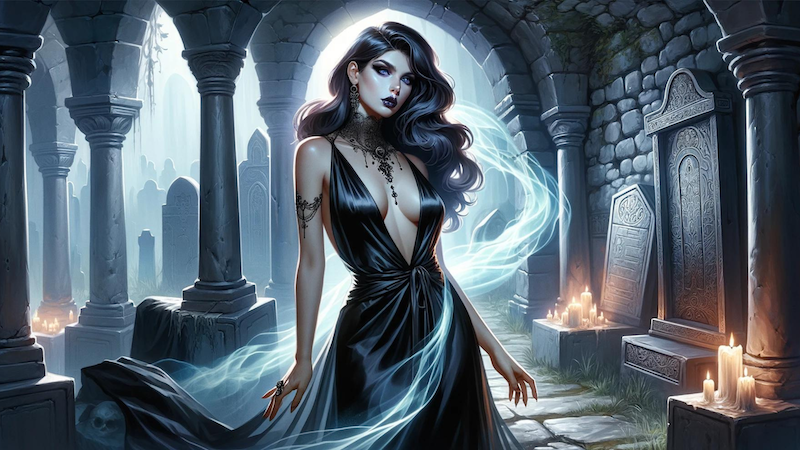

What is the Old School Renaissance (OSR)?
If you’re new to D&D, you may have heard players refer to the “OSR.” But what exactly is it? In this article, we break out everything you need to know.
The Old School Renaissance (also known as the “Old School Revival” or “OSR”) is a movement within Dungeons & Dragons and the tabletop role-playing game community to create and play adventures inspired by the early games of the 1970s. This style of play differs from many current RPGs in that it emphasizes the judgement of the Dungeon Master, rather than relying on written rules. The OSR also places less emphasis on linear story arcs, allowing for more player decisions in terms of the plot. In addition, the OSR encourages players to use their real-world skill and ingenuity, rather than character abilities, to defeat monsters and overcome obstacles.
Finally, the OSR tends to reject more recent RPG technology and advancements, such as D&D apps, virtual tabletop top platforms like Roll20, and even the use of tokens, miniatures and RPG battlemats. Instead, like the early D&D games of the 1970s, many OSR players prefer to use only pencils, dice, graph paper, printed character sheets and physical rule books for handling all aspects of the game.
In this article, we break down a few additional things new players should know about the OSR.
Table of Contents
The Pros and Cons of OSR Games


How did the OSR begin?
The OSR movement fist began in the early 2000s following the release of the third edition of Dungeons & Dragons; a rules system that many fans of older D&D editions disliked.
Interest in an older style of gaming soon began to grow, and the early formation of the Old School Renaissance was driven in large part by internet forums on sites such as Dragonsfoot and Knights & Knaves Alehouse, both of which maintained a large community of players with an interest in legacy RPGs.
During this time a number of D&D “retro clones” also appeared on the market, with rules borrowing heavily from RPGs of the 1970s and early 1980s. This included games such as Castle & Crusades, which was first published in 2004, and OSRIC (“Old School Reference and Index Compilation”), which was published in 2006.
A number of print and online publications also emerged on the scene at that time to support the growing OSR community. This includes titles such as Fight On! Magazine (which first appeared in 2008) and Knockspell Magazine (which was first published in 2009).
In 2013, OneBookShelf (owners of the websites DMs Guild and DriveThru RPG) partnered with Wizards of the Coast to launch DnDClassics, a marketplace dedicated to selling PDFs of older and out-of-print Dungeons & Dragons products. This partnership was driven in larger part by increased demand stemming from the growing OSR movement.
Today, the Old School Renaissance has grown significantly, with numerous new games being published on a regular basis. The recent OGL 2.0 controversy from Wizards of the Coast has also driven many fans to consider abandoning D&D entirely and instead play old school titles from third-party publishers.


The Four “Zen Moments” of Old School Gaming
in 2008, Matthew Finch (creator of OSRIC) released an online essay entitled A Quick Primer for Old School Gaming which broke out what he felt were the four key “Zen Moments” that made up the old school gaming. These tenets are generally considered an effective summary of the overall playstyle of the OSR and are as follows:
- Rulings Not Rules: Gameplay decisions should be based entirely on the DMs interpretation of the rules, rather than focusing on the rules themselves.
- Player Skill, Not Character Abilities: The decisions that players make – rather than their ability scores, proficiencies, weapons and magic items – are the primary focus on combat and exploration.
- Heroic, Not Superheroic: Characters are not overpowered and can be easily killed if they roll poorly or make the wrong choices.
- Forget “Game Balance”: There is no impetus to keep the game balanced or fair. The players won’t always defeat the monsters, get the treasure and save the day. Play is determined based on the decisions and dice rolls made by both players and Dungeon Masters.


A list of popular OSR games
There are currently a variety of OSR games in circulation, with more being published as the Old School Renaissance continues to develop. A few systems that are particularly popular among fans include:
- OSRIC: First released in 2006 the “Old School Reference and Index Compilation” is a remake of the 1st edition of Advanced Dungeons & Dragons, while also borrowing several 3rd edition D&D mechanics. It remains arguably one of the most popular OSR-inspired games.
- Castles & Crusades: Developed by Troll Lord Games, C&C was first published in 2004. It use a stripped-down variant of the d20 System by Wizards of the Coast but is also designed to emulate an older style of D&D play.
- Dungeon Crawl Classics: Published by Goodman Games, DCC was first published in 2012 using the d20 system and 3rd edition D&D ruleset. The game later developed its own ruleset which is heavily inspired by the 1st edition of Advanced Dungeons & Dragons. DCC remains incredibly popular and currently employs a number of well know original D&D artists and designers to work on their products.
- Basic Fantasy RPG: A free open source game self published by game designer Chris Gonnerman, BFRPG emulates the Basic and Expert sets of Dungeons & Dragons from the 1980s, while also including some rules elements from the d20 system. It was first published in 2007 and has since been updated several times.
- Labyrinth Lord: Published by Goblinoid Games, LL emulates the Basic and Expert sets of Dungeons & Dragons from the 1980s. It was first published in 2007, with a revised edition published in 2009.
- Lamentations of the Flame Princess: Based on Basic Dungeons and Dragons, LotFP is one of the darker OSR systems, combining classic fantasy tropes with heavy metal, horror and weird fiction. It was first published in 2011 and has been updated several times since then.
- For Gold & Glory: First published by God Emperor Games in 2012, FG&G borrows heavily from the second edition of Dungeons & Dragons while offering a more robust set of character creation options.
- Beyond the Wall: Developed by Flatland Games, BtW features a number of game mechanics taken from early editions of D&D, with a campaign setting inspired by folklore, the lighthearted fantasy literature of Lloyd Alexander and Ursula LeGuin, and classic 80s fantasy films such as The Princess Bride and Ladyhawke.
- Old School Essentials: Published by Necrotic Gnome, OSE is a retro clone of the 1981 Dungeons & Dragons Basic and Expert sets. Currently OSE comes in two versions: “Classic Fantasy” and “Advanced Fantasy” (with the latter being inspired by the first edition of Advanced Dungeons & Dragons).
- Swords and Wizardry: Originally developed by Mythmere Games in 2009 and now published by Frog God Games, S&W emulates the original 1974 edition of Dungeons & Dragons.
- Mazes & Perils: M&P is a retro-clone developed by Wild Games Productions that emulates the 1977 version of the D&D Basic Set.


Common OSR Terminology
While you don’t need to have ever played D&D before to participate in the OSR it may be helpful to understand some of the many terms and acronyms used by players.
- B/X: The original Basic and Expert rule sets of Dungeons & Dragons, published in 1977 and 1981, respectively.
- BECMI: The Basic, Expert, Companion and Immortal D&D sets published in the 1970s and 80s.
- NSR: Short for “New School Revolution,” this is an emerging movement that borrows the rules championed by the OSR, but combines them with more modern settings and aesthetics, many of which are often steeped in horror or the new weird literary movement.
- Nu OSR: Game systems that have been created from the OSR movement itself rather than being a recreation of an existing older RPG system. These games are often considered part of the New School Revolution (see above).
- Retro clone: A tabletop RPG game that uses the original game rules from D&D and RPG core sets developed in the 1970s and 80s.
- OSR Adjacent: A game that has the “flavor” of an old school RPG game but that doesn’t use the older, established D&D rules.
- TSR: Short for “Tactical Studies Rules”, TSR is the original publisher of Dungeons & Dragons before the game was purchased by Wizards of the Coast in 1997.


The Pros and Cons of the OSR
While the OSR has become an incredibly popular and widespread movement, it’s definitely not for everyone and there are a few things to consider if you are thinking of jumping in.
Pros
- Simple and easy-to-learn rules
- Less dice rolling for DMs and players
- Classic adventures with a wide range of dungeons
- Large and passionate online community
- Limits dealing with larger publishers such as Wizards of the Coast
Cons
- Greater chance of player character deaths (although the challenge is also a pro to some players)
- Storytelling and plots are less important
- Game balance is often ignored, resulting in more difficult adventures
- Focuses heavily on dungeon crawling rather than urban or wilderness exploration
- Can be somewhat intimidating for newer players, as most OSR players have been involved with the hobby for many years


Old School Renaissance Resources
If you’re looking for more information on the OSR, you can also find a number of helpful online resources. Below are just a few of the many websites, blogs, podcasts and YouTube channels devote the Old School Renaissance.
- Old School RPG Planet
- OSR Products on LuLu
- Starting OSR Adventures
- OSR on Reddit
- Catalogue of OSR Dungeon Design Tables,
- OSR Reading & Recommendations
- OSR Google Search Engine
- OSR Random Generator
- Questing Beast (OSR YouTube channel)


More D&D News Coverage
For more from the world of Wizards of the Coast, visit our D&D News page.


